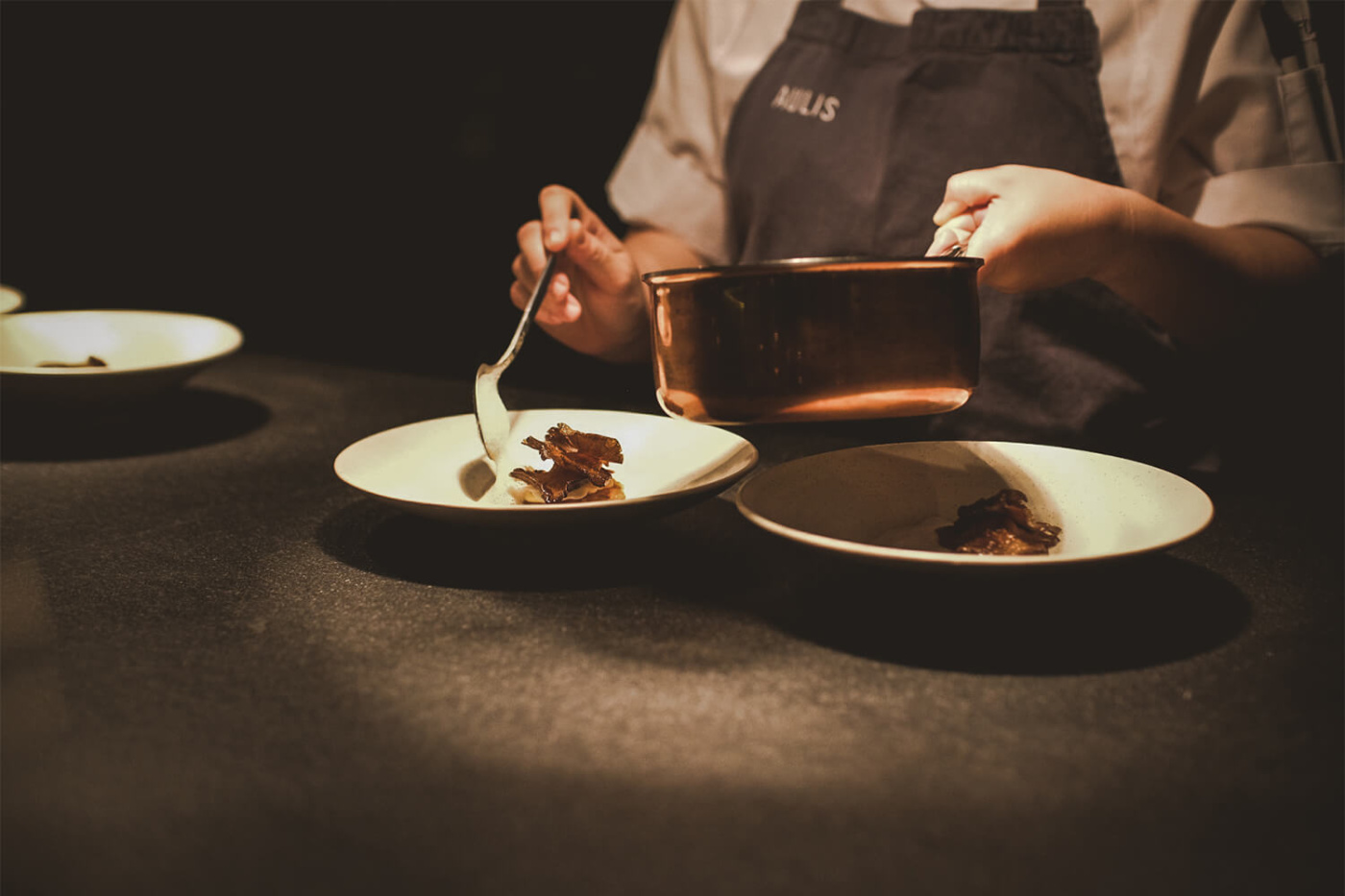Aulis Phuket Brings Michelin-Starred Mastery to the Andaman Coast
Phuket might be known for its riotous nightlife, but if you traverse up North, the tide of tourism starts to shift in a more glamorous direction. Cue Iniala Beach House, which scored its first Michelin star at the inaugural introduction of the awards in late 2024. It’s easy to see why—once you’ve settled into the palm-swaying estate on the edge of the tumbling sea, you’ll instantly feel good about your life choices. Given that the true allure of this exclusive property lies in its expansive, sun-drenched shoreline, dining options may be somewhat limited. That’s where Iniala Beach House thrives, meeting guests’ gastronomic needs with not one, but three dining concepts: all-day dining haven Campana Lounge; warm Thai regional cuisine helmed by award-winning chef Ian Kittichai, Anaalā Thailand and Phuket’s most recent crowning achievement—one Michelin-starred Aulis, which will be the subject of our scrutiny today.
The evening kicks off in the lounge with a parade of amuse-bouches, setting the stage for what’s to come. On the cocktail list, the Grøn Pandan proves to be the ideal aperitif—pandan-infused gin, coconut fat-washed Campari, and sweet vermouth come together in a tropical reimagination of the negroni, infused with a breezy, beachside spirit. Behind the bar, a familiar face emerges—Petar Mladenovic, whom I first crossed paths with at Ion Harbour, chef Simon’s two-Michelin-starred outpost in Malta. As for tonight’s wine pairing? Consider it a promise of pure indulgence.
As expected, the first bites set the tone—meticulously composed, brimming with intention, and stacked with Pythagorean precision. Andaman Giant Trevally, cured with tarragon salt, meets the bright acidity of kumquat and the delicate heat of Kampot pepper, a study in balance. It’s followed by the signature truffle pudding, its caramelised surface kissed with butterfly needle honey and black garlic, then showered in wisps of Chiang Rai’s tomme de chèvre—a bite so transportive, it defies place and time, a masterclass in umami alchemy. Then comes the pièce de résistance: Wagyu tartare crowned with home-grown caviar from Hua Hin. A single bite, and it’s clear—this is brilliance, distilled.
The meal transitions seamlessly from the lounge to the intimate embrace of the 15-seater chef’s table, wrapped around an open kitchen where metal surfaces gleam under moody lighting. It’s a setting that feels both precise and immersive—an unfiltered deep dive into the world of hyperlocal cooking.
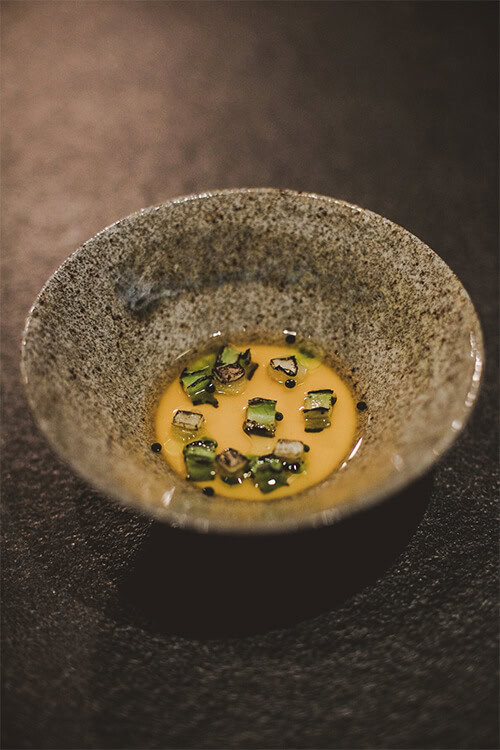
It begins with a bold first move: fermented fennel and roasted chicken broth, poured over a silken Phang Nga clam custard, its surface crowned with torched fennel. The flavours are delightfully peculiar, compelling you to chase every last drop with an eager clink of the spoon. Then, a Chumphon river prawn ballotine arrives—its delicate seaworthy sweetness tempered by the gentle acidity of jasmine rice vinegar jelly and the subtle crunch of fermented jicama bathed in dill oil.
We press on to a dish of cassava, its earthy warmth amplified by ribbons of local goat’s cheese and oyster mushrooms, their edges kissed by smoke and fire. It’s the kind of course that lingers—both on the palate and in the mind. And as the meal unfolds, one thing becomes clear: I never want this journey to end.
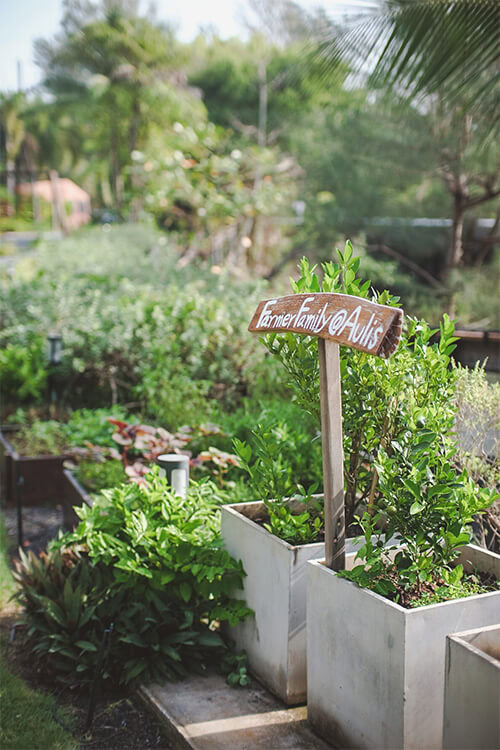
A brief interlude leads us into the quiet darkness of the gardening plots, just a stone’s throw away. Here, a constellation of herbs—oxalis, calamansi, cilantro, geraniums, and meadowsweet—flourish, each playing its part in the restaurant’s garden-to-table ethos. The air hums with the scent of citrus and earth, a gentle reminder of the provenance behind each plate. It’s also a pause, a moment to reset. From the balmy exterior, the chef’s table glows in the distance, its modern silhouette framed by the night—an invitation to return, refreshed and ready for what’s to come.
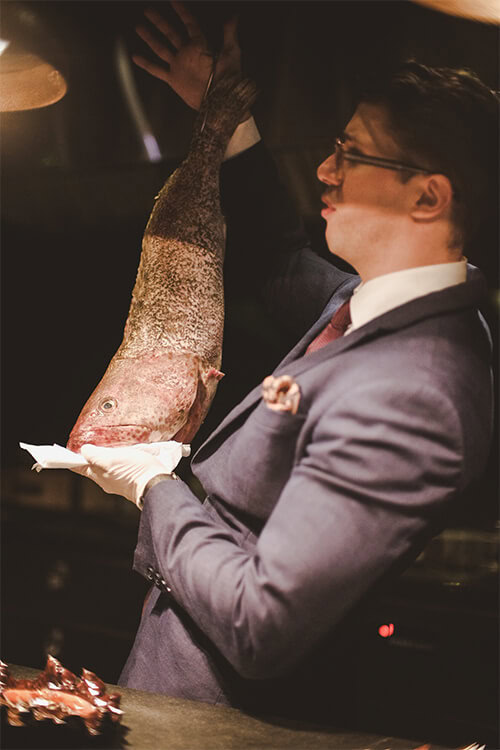
Upon re-entry, a foot-long orange-spotted grouper is called to our attention. It’s dry-aged for four days in-house and stuffed with Thai chives, then served with a sauce of roasted fish bone and fermented tea. Sommelier Peter picks a Pietradolce 2019 to accompany this dish, a beguiling red from Etna featuring 85-year-old vines of native Nerello Mascalese that quickly cements its place as the best wine pairing of the evening.
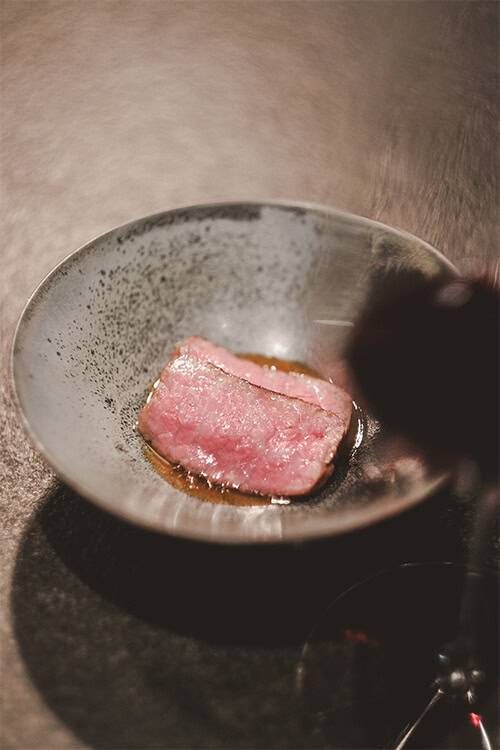
The hero of the night arrives next: two pristine slices of Khon Kaen Wagyu striploin, reverse-seared to perfection, then draped in a rich, smoked marrow and mulberry wine sauce.
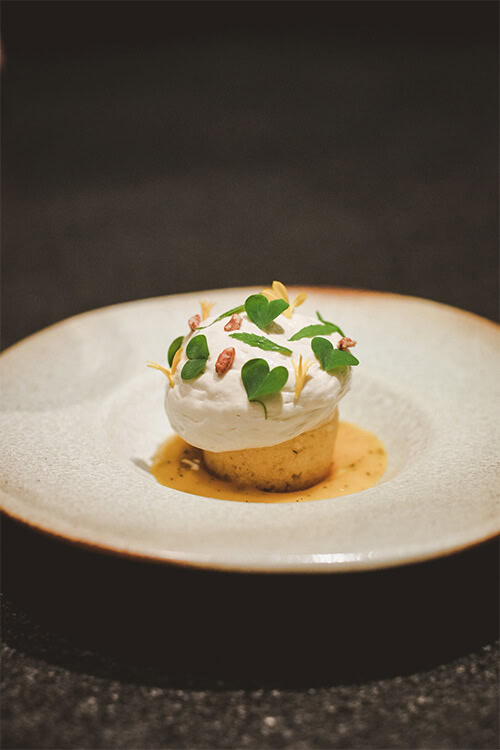
We leave behind the savoury symphony and step into a world of playful indulgence, beginning with a cheese course that defies convention—a frozen Chiang Mai sheep’s yogurt, brightened with coriander, aerated lime, and kinome. One spoonful in, and I’m transfixed. The kitchen keeps the momentum going, landing sweet punches with a chamomile cake nestled in a pool of Kaew Kamin mango sauce, followed by a luscious brown rice-infused ice cream and diplomat cream perfumed with marigold and pandan—each bite a measured balance of nostalgia and novelty.
Then, the true protagonist takes centre stage: Aulis, ever-adaptable, embodying the essence of its surroundings. Here, against the backdrop of the Andaman Sea, it manifests as a salted Nam Hom coconut mousse and caramel, crowned with Regency brandy-caramelized local pineapple. Crunchy, rich, and unapologetically boozy, it elicits a chorus of drawn-out oohs and aahs.
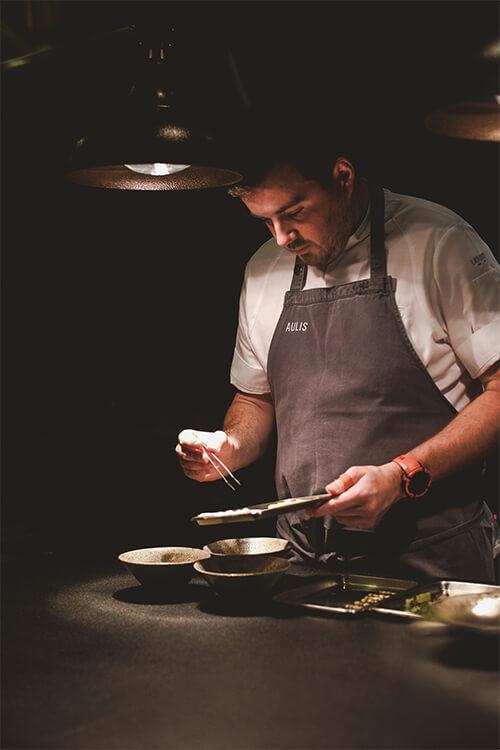
In this no-holds-barred dining setting, the traditional divide between front and back-of-house fades, replaced by a seamless choreography of hospitality where even the chefs wield ‘soft skills’ with practiced ease. We listen intently as chef Hamish Allen reminisces about his childhood in Cartmel: “We were walking past Simon’s newly opened restaurant, and my mother remarked that it was French and would never survive,” he recalls. “Fast forward to today, and he’s single-handedly driving an entire town—drawing in tourism, rallying farmers, and shaping a thriving ecosystem of artisans.”
As the evening draws to a close, my olfactory senses ignite one last time with a bite of Rai Na Rak single-origin chocolate. I can’t help but wonder: will Simon Rogan’s outpost in Phuket wield the same transformative power over sustainable agriculture as it has in the UK? The island’s fine dining scene certainly seems poised for it. But as with all things, only time will tell.
